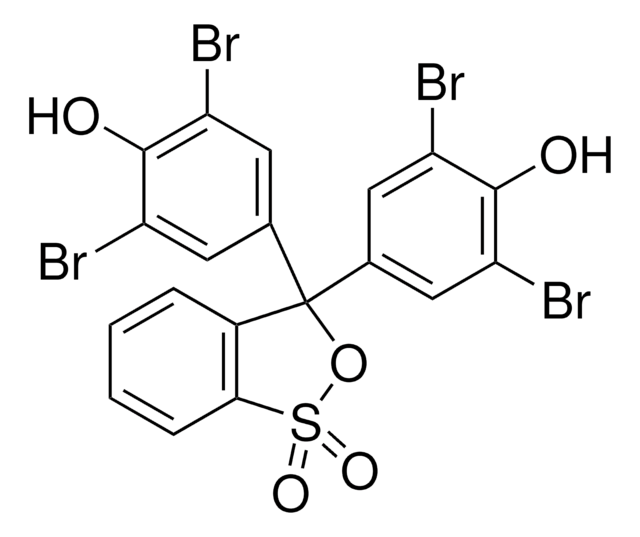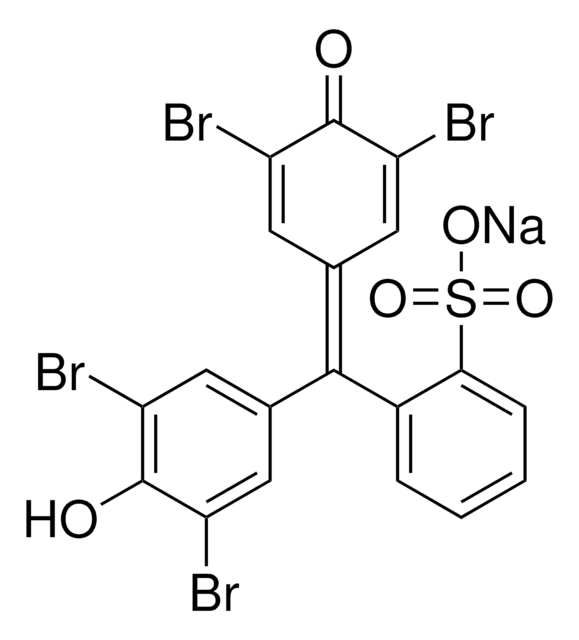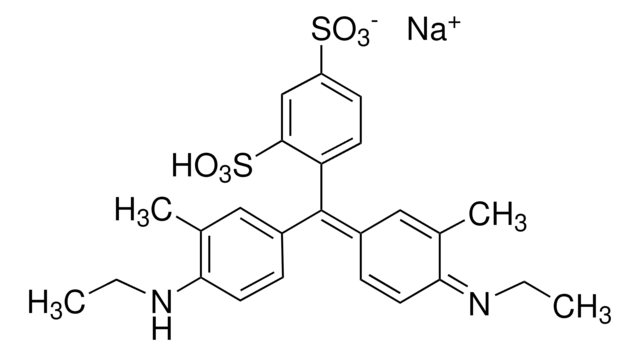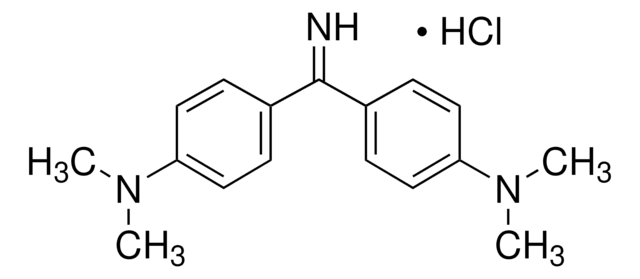B0126
Bromophenol Blue
Powder
Sinonimo/i:
3′,3′′,5′,5′′-Tetrabromophenolsulfonephthalein, Bromophenol Blue (BPB), Bromphenol Blue Sultone Form
About This Item
Prodotti consigliati
product name
Bromophenol Blue, titration: suitable
agenzia
suitable for SM 2310
suitable for SM 2320
Livello qualitativo
Forma fisica
powder
tecniche
titration: suitable
Colore
faint beige to very dark beige
faint orange to very dark orange
visual transition interval
3.0-4.6, yellow-green to blue
Punto di fusione
273 °C
Solubilità
methanol: 10 mg/mL
applicazioni
diagnostic assay manufacturing
hematology
histology
Temperatura di conservazione
room temp
Stringa SMILE
Oc1c(Br)cc(cc1Br)C2(OS(=O)(=O)c3ccccc23)c4cc(Br)c(O)c(Br)c4
InChI
1S/C19H10Br4O5S/c20-12-5-9(6-13(21)17(12)24)19(10-7-14(22)18(25)15(23)8-10)11-3-1-2-4-16(11)29(26,27)28-19/h1-8,24-25H
UDSAIICHUKSCKT-UHFFFAOYSA-N
Cerchi prodotti simili? Visita Guida al confronto tra prodotti
Descrizione generale
Applicazioni
Codice della classe di stoccaggio
11 - Combustible Solids
Classe di pericolosità dell'acqua (WGK)
WGK 3
Punto d’infiammabilità (°F)
Not applicable
Punto d’infiammabilità (°C)
Not applicable
Dispositivi di protezione individuale
Eyeshields, Gloves, type N95 (US)
Choose from one of the most recent versions:
Certificati d'analisi (COA)
Don't see the Right Version?
If you require a particular version, you can look up a specific certificate by the Lot or Batch number.
Possiedi già questo prodotto?
I documenti relativi ai prodotti acquistati recentemente sono disponibili nell’Archivio dei documenti.
I clienti hanno visto anche
Il team dei nostri ricercatori vanta grande esperienza in tutte le aree della ricerca quali Life Science, scienza dei materiali, sintesi chimica, cromatografia, discipline analitiche, ecc..
Contatta l'Assistenza Tecnica.






